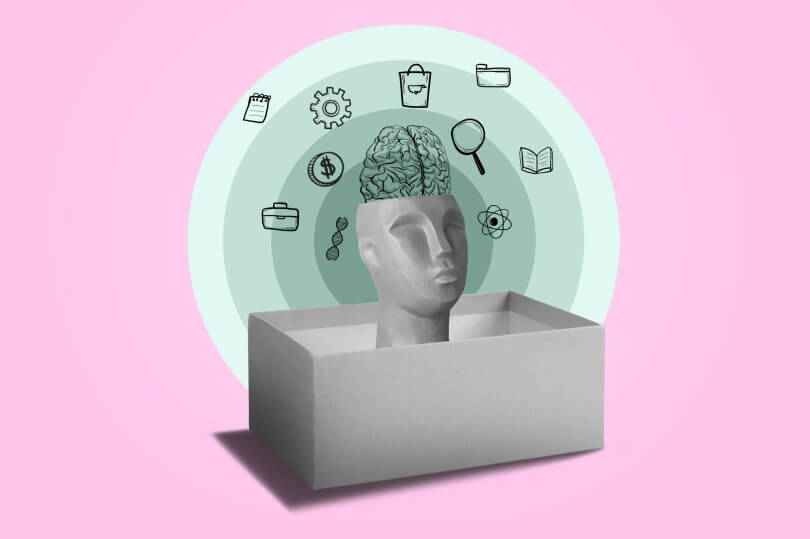Table of Contents
The Role of Subconscious Beliefs in Habit Creation

The Hidden Influence of the Subconscious Mind on Daily Routines
The subtleties of human behavior and the complex interplay between our conscious decisions and subconscious beliefs shape the fabric of our daily lives. The invisible forces of habit creation, orchestrated within the depths of our minds, have profound impacts on the way we think, feel, and act. The subconscious mind is a silent director of our behavior, often guiding us along paths laid down by repeated actions and entrenched belief systems.
The Fine Dance of Habit Creation
The inception of a habit often begins unnoticed in the realm of subconscious influence on behavior. Gradually, through repetition, this influence solidifies into tangible patterns. Habit creation is not simply a matter of willpower; rather, it is a structured process influenced by various subconscious beliefs. To elucidate:
- Each action we repeat is etched deeper into the neuronal pathways of our brain, favoring ease over effort in the future.
- Emotional responses and rewards associated with actions strengthen habits and beliefs, tethering them to our daily routines.
- Environmental cues subtly trigger the automated scripts written in the recesses of our subconscious mind.
The importance of belief systems in shaping habits cannot be overstated. For instance, an individual who subconsciously equates productivity with success might find themselves habitually working long hours, driven by a belief that rest equates to laziness or underachievement.
Deciphering the Influence of Subconscious Beliefs
Our subconscious beliefs are the bedrock of our perspective towards life, quietly influencing our decisions and reactions. Habits and beliefs are entwined, with each reinforcing the other in a powerful cycle. A belief that one is inherently disorganized can lead to cluttered personal spaces, solidifying the belief through repeated observation of one’s untidy environment. Changing such a habit requires addressing the underlying subconscious belief that acts as a silent gatekeeper, pre-approving or vetoing potential changes in behavior.
An insightful academic research demonstrated that habit formation is not only a matter of completing an action repeatedly but also of embedding the habit within a supportive structure of beliefs. For example, someone who wishes to instill a habit of morning exercises must align their subconscious beliefs with the notion that they are a person who values health and has the discipline to maintain such a regimen.
Transforming Subconscious Patterns
As vital as it is to recognize the sway of the subconscious mind, it is equally crucial to understand that transformation is possible. Habits can be reshaped and belief systems can be rewritten, provided one takes a conscientious and strategic approach. Engaging in activities that foster self-awareness, such as mindfulness meditation or journaling, can unearth subconscious beliefs and offer a window into understanding the reasons behind our automatic behaviors.
Moreover, incremental changes in behavior, paired with positive reinforcement, can lead to a cascading effect, altering the landscape of one’s subconscious inclinations. By replacing negative habits with positive actions and self-affirmations, one can gradually recalibrate the subconscious mind towards a more empowering set of behaviors and beliefs.
Understanding and harnessing the power of subconscious beliefs and habit formation can unlock a higher degree of control over one’s life, leading to more mindful, rewarding, and efficient daily routines.
Breaking Free from Limiting Beliefs to Foster Positive Habits
Unlocking the Power of the Subconscious Mind
Our subconscious beliefs are pivotal in shaping our everyday actions and reactions, often without us realizing the extent of their influence. The profound impact of the subconscious on our behavior enlightens us on how powerful underlying belief systems can be in directing our life’s path, especially when it comes to habit creation.
The Mechanics of Habit Formation
Habit formation can be likened to a pathway through a dense forest. Initially, traversing this path is challenging and requires conscious effort. However, as we repeatedly walk the same route, it becomes well-trodden, easier to navigate, and eventually, we can traverse it with little to no conscious thought. This is a practical example of how habits and beliefs take root in our lives.
Understanding Subconscious Influence
Fundamental to altering our habits is the understanding that our subconscious mind operates largely through the repetition of behaviors and the reinforcement of associated beliefs. For example, consider the belief that exercise is inherently unenjoyable. This belief could lead to a habit of avoiding physical activity, engraining the behavior as a part of one’s identity.
Creating New, Empowering Beliefs
To cultivate positive habits, one must address and dismantle limiting subconscious beliefs. This process begins with awareness. Recognizing the subconscious influence on behavior allows us to challenge and replace these deep-seated narratives.
For instance, by consciously acknowledging successes during exercise, no matter how small, you can start reshaping your belief system, convincing the subconscious that physical activity can be rewarding and even enjoyable. As this new belief takes hold, the effort required to engage in the activity diminishes, and a positive habit forms.
- Identify limiting beliefs by reflecting on habitual behaviors that are not serving you.
- Challenge these beliefs by scrutinizing their validity and seeking evidence that contradicts them.
- Replace old beliefs by intentionally practicing and reinforcing behaviors that align with empowering new beliefs.
Consistency: The Bedrock of Change
Commitment to consistent action is key in rewiring the subconscious mind. Implementing small but regular changes can lead to significant shifts in subconscious beliefs and, consequently, habits. Returning to our example, committing to a manageable exercise routine and progressively increasing its intensity can transform your belief about physical fitness and embed this new, health-promoting habit into your life.
Incorporating these strategies not only enhances personal growth and development but also demonstrates the malleability of our subconscious beliefs. By engaging with and reshaping our internal narrative, we unlock the potential to forge habits that lead to a healthier, more fulfilling life.
Bridging the Gap Between Knowledge and Action

Strategies for Reprogramming the Subconscious for Success
Our subconscious beliefs are often the unseen architects of our lives. These belief systems are rooted in the depths of our mind, and they significantly influence our habits and behaviors without us even realizing it. Habit creation is not simply a matter of willpower and conscious effort – it is rooted deeply in the intricate web of subconscious influence on behavior.
Understanding the Subconscious Mind
The subconscious is a vast storehouse of beliefs and past experiences that shapes how we think, feel, and act. A classic example is how a person may subconsciously associate social events with anxiety due to past embarrassments. This belief can trigger a habit of avoidance, reinforcing the subconscious notion that social gatherings are to be feared. To change this, one must address the subconscious beliefs rather than the behavior alone.
Research in cognitive neuroscience and psychology shows that our conscious mind accounts for only about 5% of our cognitive activities, implying that a staggering 95% is governed by the subconscious. By leveraging this understanding, we can begin to form habits that align with our desired outcomes.
The Power of Habit Creation
Subconscious beliefs are powerful, but they are not immutable. Habit formation is the key to reprogramming these beliefs for success. By consistently performing actions that align with where you want to be, you slowly rewire your brain. An individual who wishes to become a runner, for instance, may start by running for a few minutes every day. Over time, this action becomes ingrained, altering subconscious beliefs about their identity and capabilities.
Neuroplasticity, the brain’s ability to reorganize itself by forming new neural connections throughout life, supports the idea that habits have the power to transform our belief systems. Each repetition of a behavior strengthens the neural pathways associated with that behavior, making it more likely to occur automatically in the future.
Practical Strategies for Reprogramming
Habit and belief reprogramming is a deliberate process. Consider the following steps to initiate this transformation:
- Visualization and affirmation: Visualize yourself as already having achieved your goals, and use affirmations to positively reinforce the belief in your ability to succeed.
- Incremental habit formation: Start small to build new habits, so you don’t overwhelm your system. Consistency in these small actions leads to significant subconscious changes over time.
- Environment design: Design your surroundings to naturally promote behaviors that align with your desired habits. This could involve positioning running shoes by the door or placing fruit on the counter for healthier eating habits.
In closing, the interplay between subconscious beliefs and habit formation cannot be overstated. By strategically reprogramming the subconscious mind through intentional habit creation, you lay a robust foundation for long-term success. The journey involves knowing the subconscious patterns that govern our behaviors and mindfully constructing a life of purposeful habits that shape the beliefs leading to success.
Practical Steps to Convert Conscious Understanding into Subconscious Habits
Our actions, reactions, and daily routines are deeply intertwined with both conscious decisions and unconscious patterns. Using conscious understanding to mold subconscious habits is a craft honed over time. Subconscious beliefs and habit creation often go hand in hand, impacting how we behave without us even knowing. Let’s explore practical steps to turn conscious insights into automatic habits.
Identifying Core Beliefs
To influence behavior, one must first recognize the belief systems functioning within the subconscious. An athlete, for instance, might possess a deeply held subconscious belief that no pain means no gain, driving relentless training routines.
Shifting the Belief Paradigm
Once root beliefs are identified, the challenge lies in reshaping them to foster positive habit creation. For example, if one’s subconscious holds on to a belief of undeserving success, consciously reframing success as a natural consequence of hard work can kickstart a change.
Integrating New Habits
With the belief systems recalibrated, the focus turns to solidifying new habits. Subconscious influence on behavior is so profound that new practices can become second nature when approached correctly. Much like learning to drive, the more we practice, the less we consciously think about the process.
By addressing subconscious beliefs, one can effectively guide habit creation through understanding, intention, and persistence. By consciously designing our belief systems to facilitate the habits we want to embody, we create an environment where positive change is not just possible, but inevitable.
Summary
The intricate relationship between our subconscious beliefs and the habits we form is fundamental to the fabric of our daily lives. Understanding The Role of Subconscious Beliefs in Habit Creation is key to making powerful, long-lasting changes in behavior. Our actions are significantly influenced by our subconscious mind – a silent force that often shapes our decisions without us even realizing it.
Unlocking Subconscious Beliefs
To unlock the potential for change, we must delve into the depths of our subconscious. At the heart of habitual actions lie our belief systems that drive behavior in subtle yet profound ways. The merging of habits and beliefs creates a cycle that determines much of how we operate on a day-to-day basis.
For effective habit creation, it’s essential to consider the following:
- Actions repeated consistently become neural patterns, easing the effort required to perform them over time.
- Emotions play a vital role in strengthening habits, where positive feelings associated with an action motivate us to repeat it.
- Our environment can trigger subconscious behaviors, acting as a cue for habit loops to begin.
To modify a habit, we must first address these underlying subconscious beliefs that serve as both barriers and gateways to behavior change.
The subconscious mind’s impact on our behavior is multifaceted, affecting everything from simple daily routines to complex emotional responses. Cognitive neuroscience suggests that the conscious mind is only the tip of the iceberg, with the vast majority of our cognitive processes, including habit formation, occurring subconsciously.
Reprogramming through Habit Formation
Transforming habits is akin to paving a new path in the forest of our mind. It requires consistent, incremental changes that, over time, can shift the bedrock of subconscious beliefs and translate into new behaviors. By continuously engaging in small actions aligned with new belief systems and rewarding ourselves for positive outcomes, we create a fertile ground for healthy habits to grow.
To formulate new empowering beliefs and habits, consider these steps:
- Visualization and affirmation: Picture having achieved your goals and affirm your capacity for success.
- Gradual habit building: Start with manageable changes and maintain consistency to establish new patterns.
- Environmental adjustment: Arrange your surroundings to support desired habits, such as placing running shoes by the door for morning runs.
By addressing the subconscious beliefs that influence our behavior, we can guide the creation of new, positive habits. This not only sets the stage for personal growth but also empowers us to live more efficiently and mindfully, shaping a future aligned with our aspirations. Through understanding, intention, and persistence, one can navigate the fine dance of habit creation and harness the power of the subconscious mind to forge a fulfilling life.
FAQ – The Role of Subconscious Beliefs in Habit Creation
How can we identify and alter subconscious beliefs that negatively impact our daily habits and routines?
Identifying and altering negative subconscious beliefs starts with self-reflection and mindful awareness; observe your emotional reactions and patterns in various situations to uncover underlying beliefs. To change them, engage in positive affirmations and cognitive-behavioral techniques, consistently challenging and reframing those beliefs with evidence and supportive thoughts that align with the habits and routines you want to establish. Practices like meditation and journaling can also aid in bringing subconscious thoughts to the surface, allowing for more effective modification.
How can identifying and altering subconscious beliefs influence our daily habits and routines?
Understanding and reshaping our subconscious beliefs has the tremendous capacity to revamp our daily habits and routines. Subconscious beliefs serve as the hidden architects of our actions, often operating unnoticed beneath the surface of our conscious awareness; by bringing them to light and modifying them, we can align our deeper drives with the positive habits we wish to cultivate. This transformative process allows an individual to break free from self-imposed limitations and engender profound changes in behavior and life outcomes.
How can an individual identify and change subconscious beliefs that negatively impact their daily habits and routines?
To identify subconscious beliefs that hinder daily habits, individuals need to observe recurring patterns or outcomes they’re unhappy with and then trace back to the thoughts or feelings preceding these habits. Changing these ingrained beliefs begins with interrupting the automatic thought cycle and replacing it with constructive affirmations or behaviors, a process reinforced through repetition and patience. Real-life examples include shifting the mindset from ‘I always fail at diets’ to ‘I am learning to make healthier food choices,’ and reinforcing the new belief by celebrating small victories in food selection and preparation.




